Celebrate Pride Month with a look at the most colorful symbol in LGBTQIA+ history and its changing role in how the community sees itself.
Our job as gay people was to come out, to be visible, to live in the truth . . . to get out of the lie. A flag really fit that mission, because that’s a way of proclaiming your visibility or saying, “This is who I am!”
– Gilbert Baker, Creator of the Pride flag
How did the rainbow-colored Pride flag become a universal symbol of gay pride, queer love, inclusivity, and tolerance?
Here, we dive into the history of the Pride flag, what it stands for today, and how contributors and customers can incorporate Pride visuals in a respectful and ethical way.
The History of the Pride Flag
As a community, both local and international, gay people were in the midst of an upheaval, a battle for equal rights, a shift in status where we were now demanding power, taking it. This was our new revolution—a tribal, individualistic, and collective vision. It deserved a new symbol.
– Gilbert Baker, Creator of the Pride flag
In 1978, Gilbert Baker, an openly gay man, designed the first rainbow flag to represent the gay community at the request of San Francisco-based politician Harvey Milk, the first openly gay official elected to office.
Why a flag? In his memoir, Gilbert said:
I thought of the American flag with its thirteen stripes and thirteen stars, the colonies breaking away from England to form the United States. I thought of the vertical red, white, and blue tricolor from the French Revolution and how both flags owed their beginnings to a riot, a rebellion, or revolution. I thought a gay nation should have a flag too, to proclaim its own idea of power.
– Gilbert Baker, Creator of the Pride flag
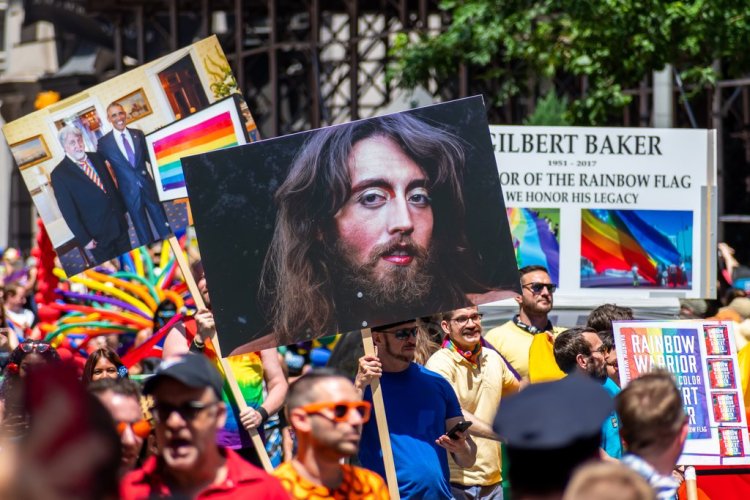
Inspired by the spectrum of a rainbow, and looking to create something that would “express our joy, our beauty, our power,” Gilbert settled on an eight-stripe flag with each color chosen to represent an idea.
The rainbow flag first made its debut at the 1978 San Francisco Gay Freedom Day Parade on June 25, but it wasn’t until 1994 that the flag was truly established as a unifying symbol for gay pride. (That same year, Gilbert produced a mile-long version to honor both the creation of the flag itself and the 25th anniversary of the Stonewall riots.)
The Original Colors of the Pride Flag
While there are many versions of the Pride flag—bisexual, pansexual, asexual, intersex, transgender, BIPOC, and more—the most common Pride flag features six colors: red, orange, yellow, green, blue, and purple.
In the original eight-stripe version, pink was chosen to represent sexuality, red for life, orange for healing, yellow for sun, green for nature, blue for art, indigo for harmony, and violet for spirit.

Over the years, the flag design changed. Pink was removed because it was too hard to source and when available, too costly to reproduce en masse. Turquoise was removed for symmetry so there would be an even amount of stripes visible when the flag hung from lampposts and balconies.
The flag became available to all who wanted to wave it. Gilbert never copyrighted the flag because he wanted it “owned by everyone,” and this act of community love is why we see the flag so prominently today.
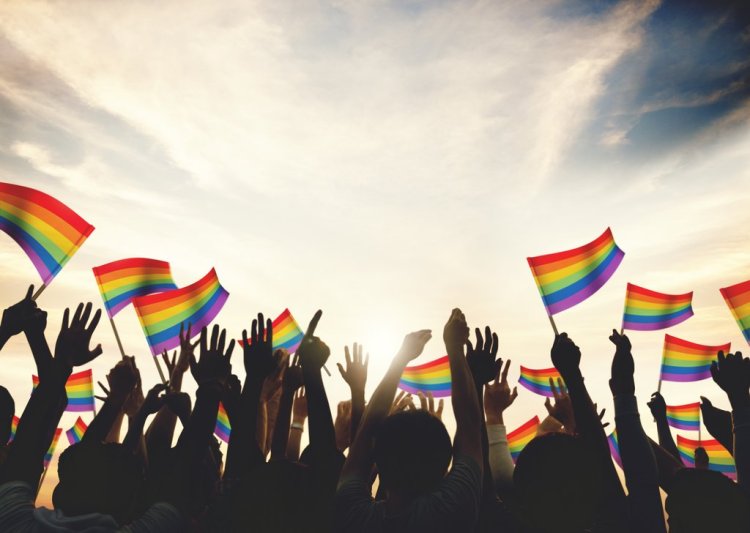
The Meaning of the Pride Flag
Since its debut in 1978, the Pride flag has become an iconic symbol of the LGBTQIA+ community. It celebrates gay pride, community, queer love, self-love, inclusivity, diversity, resistance, unity, acceptance, awareness, tolerance, freedom, power, hope, and so much more.
While we often see the Pride flag waved extra proudly during the month of June, the Pride flag carries significant meaning year-round, both in challenging and promising times.
When and Where to Incorporate the Pride Flag into Visuals
For customers and contributors, it’s important to keep in mind that the origins of the Pride flag was (and is!) a vehicle for social and cultural change. When incorporating the Pride flag into your visuals and marketing, make sure to do so in a way that’s appropriate and respectful of LGBTQIA+ communities.
Here are some tips and tricks to using the Pride flag in an inclusive and ethical way:
Tip #1: Show the Pride Flag Before, During, & After Pride Events
While Pride is a month-long celebration, it’s also important that support of LGBTQIA+ communities doesn’t stop there. The Pride flag can be used year-round as an indicator of allyship, to signify that a space or business is safe for queer folk, and as a rallying cry for diversity, acceptance, and tolerance. If you’re a photographer, don’t just focus on capturing the Pride flag during Pride events—look for ways to capture the Pride flag during every month of the year.
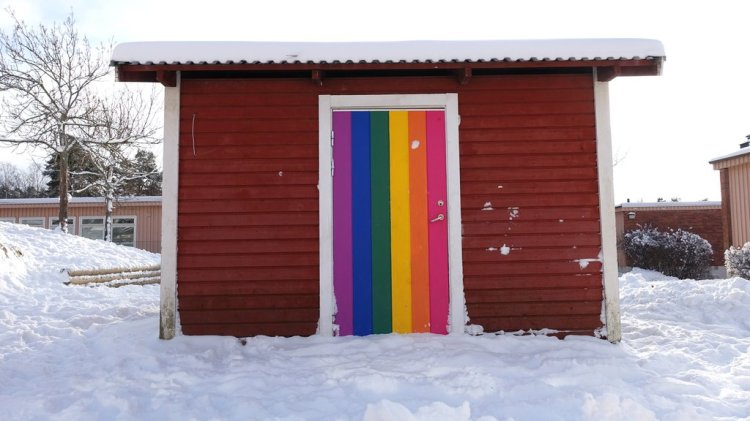
Tip #2: Avoid Rainbow Washing
This is a term that has surged in popularity over recent years as a way to indicate whether the Pride flag is being used—most often by brands and corporate organizations—for publicity or profit without significant and meaningful support. LGBTQIA+ consumers are savvy and know when a brand doesn’t dive deeper than just a once-a-year display of a rainbow flag.
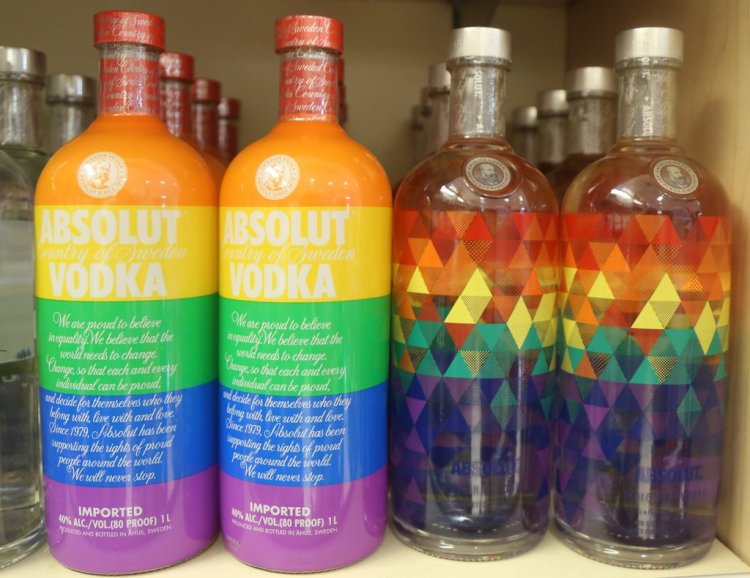
Tip #3: Understand the New Pride Flags
The Pride flag is changing. While the standard six-color stripe is still widely used today, an evolution to the flag was introduced in 2017. Dubbed the Philadelphia flag or the More Color, More Pride flag, this version added brown and black stripes to recognize LGBTQ+ people of color, as well as to combat entrenched racism in the LGBTQ+ community and Pride movement. Another version, designed in 2018, introduced trans colors to the flag in addition to brown and black stripes. This flag strives to raise the visibility of the most marginalized members of the community, LGBTQ+ people of color and trans and non binary individuals.
With multiple variations of the Pride flag available, each one has significance to different LGBTQIA+ communities. Whether you’re looking to use a Pride flag in your marketing, or you’re a photographer capturing the Pride flag in new, fresh ways, keep in mind the version of the flag you’re using and its significance.
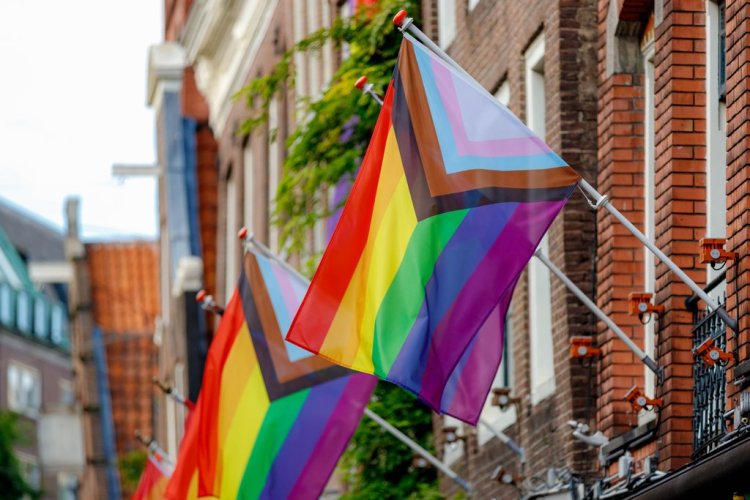
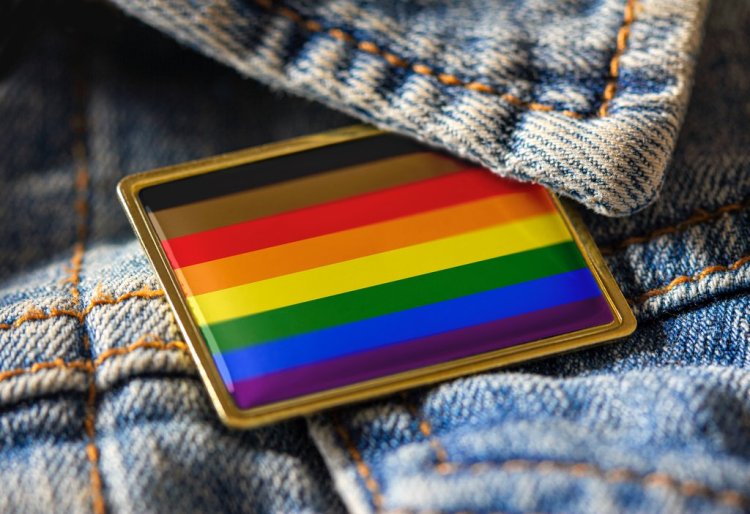
Image via Shutterstock’s Rainbows Collection.
Tip #4: Show the Diversity of LGBTQ+ Communities
Similar to the point above, make sure that your Pride visuals are diverse and inclusive! There’s a whole spectrum of wonderful people within the LGBTQIA+ community. For photographers, capture subjects of all ages, ethnicities, bodies,—you name it. After all, Pride is both about self-love and community love in all its beautiful incarnations.
Try to opt for natural scenes versus staged ones—the more authentic your images, the more they’ll resonate within the LGBTQIA+ community. Make sure to also seek consent before you photograph a subject. Creating a safe, inclusive environment (or better yet, one the subject chooses) will allow you to create a more intimate portrayal of a community. For brands and businesses using Pride visuals, showing greater representation of the LGBTQIA+ community is key to helping normalize expressions of love within a broader society.
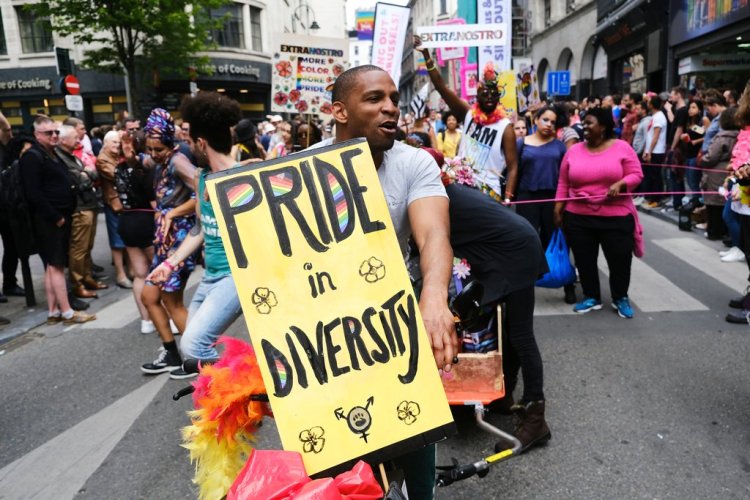
Tip #5: Smash Stereotypes
Like most things that have permeated our broader culture, when it comes to rainbow flags and Pride events, it can be easy to fall on visual stereotypes that don’t fully capture the complexity, emotion, and authentic expressions of what Pride means.
Whether you’re a photographer or brand, make sure to look for Pride visuals that go beyond tired clichés and tropes. Showing members of this community as they wish to be seen, not what they’ve been defined as, gets at the heart of what Pride is all about—the freedom of expression to be who you are.
For photographers, make sure to ask how someone would like to be photographed or what expression of self they want to show. Also, remember to show respect for your subjects’ gender and sexual identities in your keywording. Avoid using cis models in trans and nonbinary imagery. Consider how to challenge your own biases when shooting and pledge to capture a wider range of people, communities, and spaces.
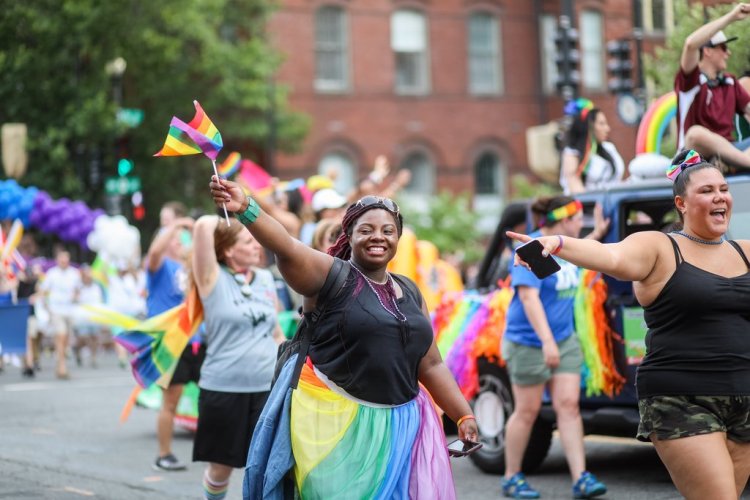
The origins of the Pride flag are beautiful, complex, and nuanced. For customers and contributors, keep these tips and tricks in mind when incorporating Pride visuals into your creative projects and you’ll find a much more meaningful and satisfying end result.
Looking for more rainbow-colored inspiration? Check out these articles:
- Idealism and Identity: The Cultural Meanings of Rainbows
- Celebrate Pride With a Rainbow Image Collection
- Download this FREE Muted Organic Rainbows Clip Art Bundle
- 10 Fresh, FREE, Fantastic Rainbow Color Palettes
- The Meaning of Colors in Cultures Around the World
Cover image via Prazis Images.




